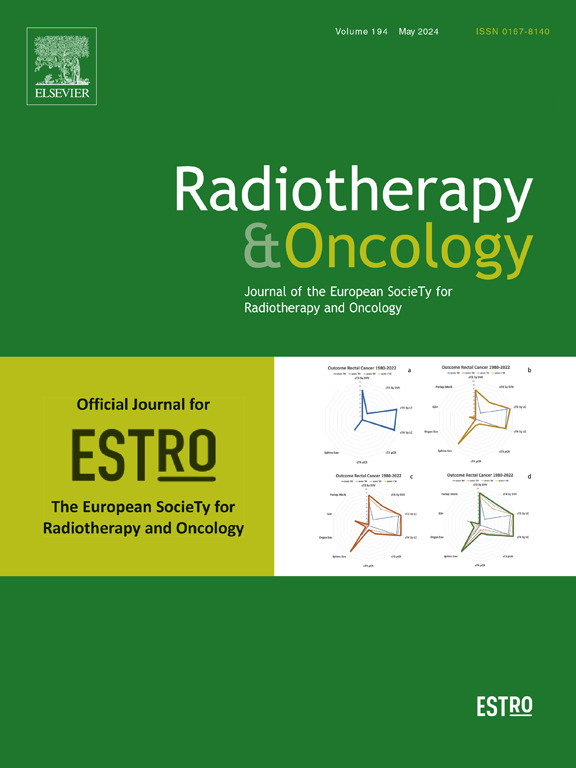ESTRO/EANO recommendation on reirradiation of glioblastoma
IF 4.9
1区 医学
Q1 ONCOLOGY
引用次数: 0
Abstract
Background and Purpose
Although reirradiation of glioblastoma has a long history of clinical practice, guidance on how to perform it in the context of recent technological advances, modern imaging modalities or systemic therapy is scarce. This joint ESTRO/EANO guideline aims to collect the existing evidence to produce recommendations for safe reirradiation of glioblastoma.
Methods
The basis of this ESTRO/EANO clinical practice guideline are nine key questions (KQ) which were formulated by a consortium of radiation-oncologists, radiologists, medical oncologists, neurooncologists, medical physicists and radiation therapists. A systematic review was conducted and the KQ were addressed based on this evidence and expert opinion to draft recommendations and statements which were then voted on in a modified DELPHI process.
Results
The DELPHI consensus process resulted in 18 recommendations and nine statements of which all achieved group consensus. Thirteen (48%) were based on available prospective evidence and 14 (52%) on expert opinion. Level of evidence did not exceed “moderate”, reflecting the scarcity of prospective randomized evidence for most aspects of reirradiation. Consensus recommendations and statements reflected aspects of patient selection, imaging for recurrence assessment, target volume delineation, treatment planning, combined modality treatment, and follow-up.
Conclusions
Currently, based on the ESTRO/EANO consensus, reirradiation may be considered in selected patients with glioblastoma. GTV definition is based on T1-weighted MR-sequences, while a GTV to CTV margin is not mandatory. A PTV margin of maximum 3 mm is recommended based on the individual mask system and IGRT procedures. A biological effective dose greater than 36 Gy in 2 Gy fractions is recommended. A careful assessment of prognostic factors on survival such as age, interval from initial radiation, large treatment volumes, poor KPS, and poor neurologic/neurocognitive status is essential for making a clinical recommendation.
求助全文
约1分钟内获得全文
求助全文
来源期刊

Radiotherapy and Oncology
医学-核医学
CiteScore
10.30
自引率
10.50%
发文量
2445
审稿时长
45 days
期刊介绍:
Radiotherapy and Oncology publishes papers describing original research as well as review articles. It covers areas of interest relating to radiation oncology. This includes: clinical radiotherapy, combined modality treatment, translational studies, epidemiological outcomes, imaging, dosimetry, and radiation therapy planning, experimental work in radiobiology, chemobiology, hyperthermia and tumour biology, as well as data science in radiation oncology and physics aspects relevant to oncology.Papers on more general aspects of interest to the radiation oncologist including chemotherapy, surgery and immunology are also published.
 求助内容:
求助内容: 应助结果提醒方式:
应助结果提醒方式:


